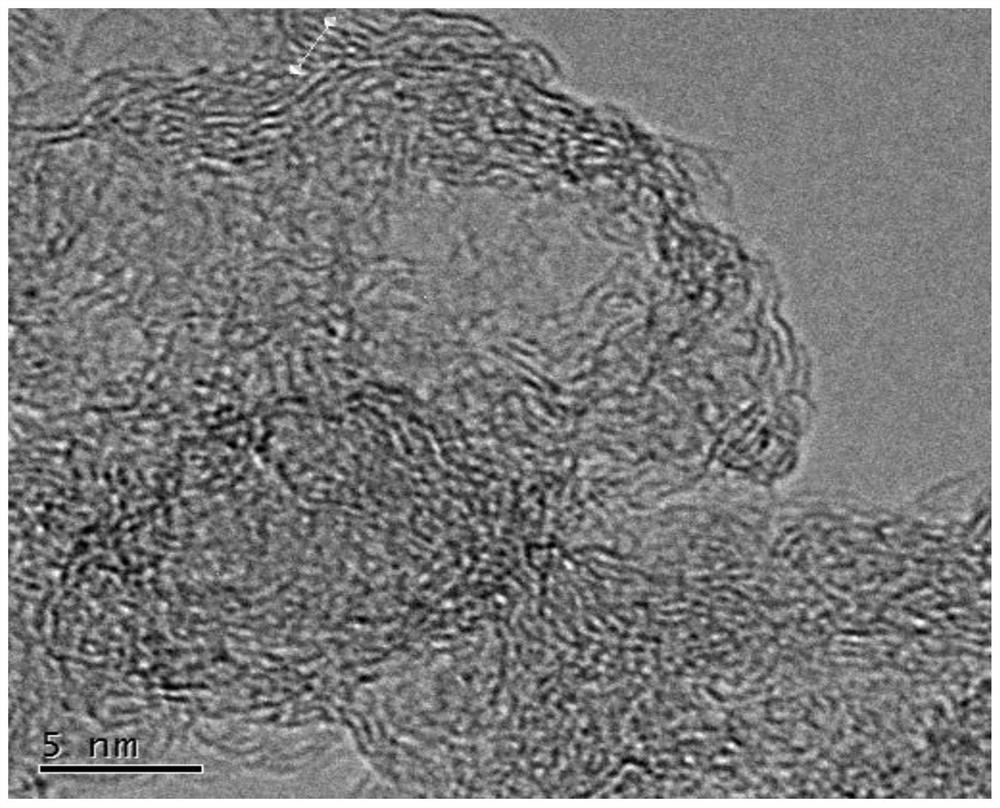A method for activating persulfate to degrade organic pollutants using multi-level porous biochar
A technology of organic pollutants and persulfate, applied in water pollutants, chemical instruments and methods, water/sewage treatment, etc. problem, to achieve the effect of high-efficiency electron transfer performance, rich nitrogen doping content, and high degree of graphitization
- Summary
- Abstract
- Description
- Claims
- Application Information
AI Technical Summary
Problems solved by technology
Method used
Image
Examples
Embodiment 1
[0038] A method for activating persulfate to degrade organic pollutants by using multi-level pore biochar, specifically: using multi-level pore bio-char to activate sodium persulfate to degrade 2,4-dichlorophenol in water, comprising the following steps:
[0039] According to the mass ratio of multi-level pore biochar and 2,4-dichlorophenol in the 2,4-dichlorophenol solution is 2:1, add multi-level pore biochar (PSS-800) to an initial concentration of 100mg / L In the 2,4-dichlorophenol solution (pH=5.41), the adsorption treatment was carried out at 160rpm and 25°C for 60min. The mass ratio of 2,4-dichlorophenol in the dichlorophenol solution is 5:1, sodium persulfate is added to the 2,4-dichlorophenol solution, oxidative degradation is carried out at 160r / min for 120min, after the reaction is completed, the Solid-liquid separation completes the degradation of 2,4-dichlorophenol and recovers multi-level porous biochar.
[0040] In this embodiment, samples were taken to measure ...
Embodiment 2
[0066] A method for activating persulfate to degrade organic pollutants by using multi-level pore biochar, specifically: using multi-level pore bio-char to activate sodium persulfate to degrade 2,4-dichlorophenol in water, comprising the following steps:
[0067] According to the mass ratio of multi-level pore biochar and 2,4-dichlorophenol in 2,4-dichlorophenol solution as 2:1, the multi-level pore biochar (PSS-800) prepared in Example 1 was respectively Added to 2,4-dichlorophenol solutions with pH values of 2.63, 3.84, 5.41, 7.11, 8.47, and 9.36 (the initial concentration of the solution was 100mg / L), and adsorbed at 160rpm and 25°C for 60min to reach After the adsorption equilibrium of 2,4-dichlorophenol, the mass ratio of 2,4-dichlorophenol in persulfate and 2,4-dichlorophenol solution is 5: 1, sodium persulfate is added to 2, In the 4-dichlorophenol solution, oxidative degradation was carried out at 160r / min for 120min. After the reaction was completed, solid-liquid se...
Embodiment 3
[0071] A method for activating persulfate to degrade organic pollutants by using multi-level pore biochar, specifically: using multi-level pore bio-char to activate sodium persulfate to degrade 2,4-dichlorophenol in water, comprising the following steps:
[0072] According to the mass ratio of multi-level pore biochar and 2,4-dichlorophenol in 2,4-dichlorophenol solution as 1:1, 2:1, 3:1 respectively, the multi-level Pore biochar (PSS-800) was added to the 2,4-dichlorophenol solution (pH=5.41) with an initial concentration of 100mg / L, and the adsorption treatment was carried out at 160rpm and 25°C for 60min to achieve 2,4-dichlorophenol After the adsorption equilibrium of chlorophenol, according to the mass ratio of persulfate and 2,4-dichlorophenol in the 2,4-dichlorophenol solution is 5:1, add sodium persulfate to the 2,4-dichlorophenol solution In the process, oxidative degradation was carried out at 160r / min for 120min. After the reaction was completed, solid-liquid sepa...
PUM
| Property | Measurement | Unit |
|---|---|---|
| pore size | aaaaa | aaaaa |
| pore size | aaaaa | aaaaa |
| pore size | aaaaa | aaaaa |
Abstract
Description
Claims
Application Information
 Login to View More
Login to View More - R&D
- Intellectual Property
- Life Sciences
- Materials
- Tech Scout
- Unparalleled Data Quality
- Higher Quality Content
- 60% Fewer Hallucinations
Browse by: Latest US Patents, China's latest patents, Technical Efficacy Thesaurus, Application Domain, Technology Topic, Popular Technical Reports.
© 2025 PatSnap. All rights reserved.Legal|Privacy policy|Modern Slavery Act Transparency Statement|Sitemap|About US| Contact US: help@patsnap.com



